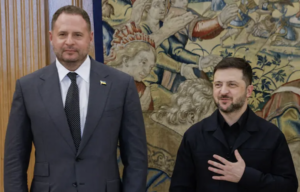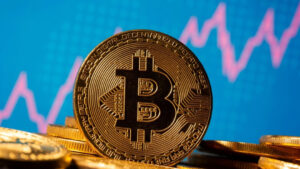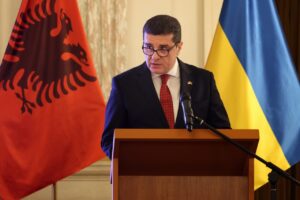
On 25 November 2025, the Ukrainian House hosted a gala ceremony to award the winners of the annual competition for professionals in the Ukrainian pharmaceutical industry, Panacea-2025, the main national event that recognises market leaders, innovations and industry achievements.
The ceremony was traditionally hosted by Timur Miroshnichenko, and the musical atmosphere of the evening was created by the band KADNAY.
The pharmaceutical industry in 2025: a year of courage, innovation and resilience
The awards ceremony brought together the leading companies, experts and innovators of the year.
In 2025, the Ukrainian pharmaceutical industry continues to operate in conditions of full-scale war and economic instability. Despite the pressure of circumstances, the market demonstrates a unique ability to adapt: companies invest in innovation, develop new approaches to products and services, implement digital solutions and support patient access to quality treatment.
This year’s ceremony was an evening of gratitude to all those who are making the Ukrainian healthcare system stronger and the pharmaceutical industry more competitive on a global level. Before announcing the winners, guests honoured the defenders of Ukraine with a minute of silence.
Winners of Panacea-2025
COMPANY OF THE YEAR
AI Excellence Award, Artificial Intelligence in Pharmacy
Winner: Roche
The company was recognised for its breakthrough in the application of artificial intelligence and the implementation of the project ‘Screening for diabetic retinopathy using AI’ — an innovation that gives patients access to fast and accurate diagnostics.
Investors in innovative treatment during wartime. International sponsors of clinical trials
Winner: MSD
The company was recognised for its continued support of clinical trials in Ukraine, increased investment in scientific programmes, and ensuring patients have access to modern treatments even during wartime.
PROJECT OF THE YEAR
Introduction of eCTD in Ukraine
Winner: State Expert Centre of the Ministry of Health of Ukraine
Ukraine has switched to the international format of registration dossiers eCTD, used by the EU, the US and leading regulators around the world, in record time. This step has already been recognised as one of the most important digital breakthroughs in Ukrainian pharmaceuticals.
EDUCATIONAL PROJECT OF THE YEAR
Polpharma Academy
The project was recognised for creating a modern interactive educational space for doctors with a focus on practice, professional support and uniting the medical community around knowledge and development.
DRUG OF THE YEAR — OVER-THE-COUNTER GROUP
2025 winners:
• AMIKSIN IS, Interchem
• PROKTOZAN NEO, STADA
• LAFEROBION, STADA
• NIKSAR, Berlin-Chemie Menarini
• HILO-KOMOD, Sona Exim
These drugs have become reliable ‘first-line solutions’ for patients in 2025.
Dynamic leader in the low-cost segment
Winner: PULMOBRIZ, MOVIHealth
The drug was recognised for its high efficacy, affordability and significant contribution to the treatment of seasonal respiratory diseases.
Panacea-2025 was made possible thanks to the support of:
• Analytical partners: IQVIA, SMD, Business Credit
• Professional associations: AIMP, AVLU, APRAD, APAU, Association of Medical Device Market Operators, Pharmaceutical League of Ukraine, Ukrainian Association of Evidence-Based Healthcare
• Legal partner: GelOn
• Tourism partner: DinAdis
• Media partners: Pharmaceutical Industry, Interfax-Ukraine
• Organiser: Zdorovo production company
This year’s Panacea has once again proven that the Ukrainian pharmaceutical industry is not just holding its own during the war — it is growing, reforming and boldly implementing global standards.
Innovative solutions, educational projects, support for clinical research and modern approaches to treatment — all this is shaping a new, strong and competitive Ukrainian pharmaceutical industry.
The organisers of the competition thanked all partners and participants for their contribution to the development of the industry and invited the community to the Panacea-2026 ceremony.
Interfax-Ukraine is the information partner of the Panacea Award


Ukrainian President Volodymyr Zelensky announced a restart of the Presidential Office, and Andriy Yermak submitted his resignation as head of the Presidential Office.
“I want no one to have any questions about Ukraine. Therefore, today we have the following internal decisions. First. There will be a reboot of the Office of the President of Ukraine. The head of the Office, Andriy Yermak, has submitted his resignation,” Zelensky said in an evening address on Friday.
He thanked Yermak for always representing Ukraine’s position in the negotiation track exactly as it should be.
“It has always been a patriotic position. But I want there to be no rumors or speculation,” the president emphasized.
Earlier on Friday, the National Anti-Corruption Bureau of Ukraine (NABU) and the Specialized Anti-Corruption Prosecutor’s Office (SAPO) reported conducting searches at Andriy Yermak’s residence.

Kyiv enterprises, with the support of the Department of Industry and Entrepreneurship Development of the Kyiv City State Administration, represented the capital of Ukraine at the MATELEC 2025 international exhibition of electrical engineering and electronics, which took place from November 18 to 20, 2025, in Madrid.
Ten Kyiv companies presented their developments at the “Made in Kyiv” stand:
On November 18, the grand opening of the Made in Kyiv collective stand took place, bringing together leading companies from the capital and serving as a platform for demonstrating innovative solutions in the fields of electronics, energy, automation, and modern manufacturing.
The opening ceremony was attended by representatives of government and diplomatic institutions, including Oksana Skrypets, Minister-Counselor of the Embassy of Ukraine in Spain, Rada Ivanova, representative of the Madrid Chamber of Commerce, Volodymyr Kostikov, Director of the Department of Industry and Entrepreneurship Development of the Kyiv City State Administration, and his deputy Anatoliy Bahan.
From the very first day of the exhibition, Kyiv-based companies began active negotiations with European partners, demonstrating the high technological level of their products and solutions. At the exhibition stand, companies presented their solutions and devices for measurement and control, software products for process management, telemetry and communication equipment, lighting and power supply systems.
Ukrainian-Spanish Business Forum: New Vectors of Partnership
On November 19, as part of Kyiv’s participation in MATELEC 2025, the Ukrainian-Spanish Business Forum was held, which became an important event for the development of bilateral economic cooperation. The forum brought together representatives of industry, energy, automation, and high technology from Ukraine and Spain, becoming an effective platform for B2B communications.
Among the participants and speakers at the forum were representatives of the Embassy of Ukraine in Spain, SERCOBE, the Ukrainian-Spanish Chamber of Commerce, Rotary Club Madrid, CEIM, and the Madrid Chamber of Commerce and Industry.
During the event, Deputy Director of the Department Anatoliy Bahan presented the catalog “Best Exporter of the Year 2025,” and a Memorandum of Cooperation was signed between the Department of Industry and Entrepreneurship Development of the Kyiv City State Administration and Rotary Club Madrid International Passport, opening up new opportunities for international cooperation.
As a result of the forum, more than 70 individual business meetings were held, and the prospects for joint projects, distribution, and production cooperation were discussed.
“This forum was not just an event for us, but an important signal that Kyiv enterprises remain competitive in the European market. The dynamics of the negotiations and the sincere interest of Spanish partners in our engineering solutions are impressive. We see a real demand from Spanish businesses for cooperation with Kyiv, and this is the best evidence of the effectiveness of our work,” said Department Director Volodymyr Kostikov.
Overall, Spanish and European companies highly appreciated the innovation, engineering culture, and product quality of Kyiv enterprises, and Kyiv’s participation in the MATELEC 2025 exhibition was a striking example of effective international presence, demonstrating the capital’s investment attractiveness and the consistent development of the export potential of Kyiv businesses.
“We are not only presenting our capabilities — we are building trust, forming partnerships, and opening the way to new markets for our enterprises. Participation in MATELEC 2025 confirms that Kyiv’s industry has powerful potential and is capable of competing at the European level,” summed up Volodymyr Kostikov.
Interfax-Ukraine is a media partner of the event.

The Unisteel plant (Kryvyi Rih, Dnipropetrovsk region), which produces galvanized cold-rolled flat products and is part of the Metinvest Group, incurred a net loss of UAH 6.389 million in January-September this year, compared to UAH 196.913 million in the same period last year.
According to the company’s interim report, which is available to the Interfax-Ukraine agency, its profit in the third quarter of 2025 amounted to UAH 37.532 million.
Revenue for this period increased by 0.3% to UAH 2 billion 653.726 million.
The uncovered loss at the end of September amounted to UAH 1 billion 46.731 million.
The LLC ended 2024 with a loss of UAH 363.768 million, while in 2023 this figure was UAH 255.057 million.
The main products manufactured by the plant are galvanized flat rolled products with a thickness of 0.40 mm to 2.50 mm, a width of 600 to 1250 mm, and a coating class (Zn) of 60-275 g/m². The volume of finished product sales in 2024 and 2023 amounted to 113,321 thousand tons and 72,500 thousand tons, respectively. In 2024, 37,917 thousand tons (32.46%) were exported and 75,404 thousand tons (66.54%) were sold on the domestic market.
In 2024, the company employed 144 people.
The Unistil plant, which produces cold-rolled galvanized flat products with a capacity of over 100 thousand tons per year, was built in 2007-2010. It is equipped with equipment from Dongbu Machinery Co., LTD (South Korea).
The authorized capital of Unistil LLC is UAH 6.01 million.
Metinvest is a vertically integrated group of mining and metallurgical enterprises. Its enterprises are located in Ukraine – in the Donetsk, Luhansk, Zaporizhzhia, and Dnipropetrovsk regions – as well as in European countries. The main shareholders of the holding company are SCM Group (71.24%) and Smart Holding (23.76%). Metinvest Holding LLC is the managing company of the Metinvest Group.

Turkmen President Serdar Berdimuhamedov signed a law on virtual assets, which will legalize cryptocurrency mining and crypto exchanges in the republic from January 1, 2026. The text of the document was published on Friday in the Neutral Turkmenistan newspaper.
The law defines the legal and organizational basis for the use of virtual assets and regulates activities in this area in the country. The document includes a list of key concepts, including blockchain, tokens, mining, smart contracts, as well as service providers of virtual assets.
Types of mining, as well as requirements for exchange operators and crypto exchanges are separately defined.
The document does not apply to securities, currencies, electronic money, bank deposits and gambling activities.
The law establishes that mining can be private and industrial. Private mining is carried out by an individual entrepreneur – resident and (or) non-resident of Turkmenistan. Industrial mining is carried out by a legal entity – resident and (or) non-resident of the country. Hidden mining is prohibited on the territory of the country. All miners must undergo mandatory state registration with the Central Bank in electronic form. The certificate is issued indefinitely.
According to the document, virtual asset service providers (crypto exchanges) may be legal entities registered in Turkmenistan, acting on the basis of a license and providing services related to virtual assets established by law.
Crypto exchanges are obliged to ensure protection of personal information and virtual assets of their customers. The following persons may not be founders or participants (shareholders), officials of crypto exchanges: individuals permanently residing in an offshore zone and (or) legal entities registered in it – non-residents of Turkmenistan; individuals and legal entities with bank accounts in offshore zones; political parties, trade unions and other public associations; legal entities and individuals in respect of whom there is information about involvement in terrorism, financing of terrorism and financing of proliferation of weapons of mass destruction; legal entities and legal entities and individuals with respect to whom there is information about involvement in terrorism, financing of terrorism and financing of proliferation of weapons of mass destruction; legal entities and legal entities with respect to whom there is information about involvement in terrorism, financing of terrorism and financing of proliferation of weapons of mass destruction.
The procedure for the establishment, operation and reporting of crypto exchanges is determined by the Cabinet of Ministers.
The law introduces restrictions on the use of state symbols in the crypto industry. Miners, issuers of virtual assets and providers of crypto services are prohibited to use the words “state”, “Turkmenistan”, “Turkmen”, ‘Turkmen’, “national” in any form, in any language and in any combinations in their names and symbols.
There are also strict requirements for advertising of cryptocurrencies: it must contain warnings about risks, information about possible total loss of funds and the fact that virtual assets are not secured by the state. It is prohibited to use images of minors in advertising and to present cryptocurrency transactions as an easy way to get rich.
The state is not liable for the depreciation or loss of virtual assets.
According to the law, miners and service providers of virtual assets are obliged to take measures to combat money laundering, financing of terrorism and financing of proliferation of weapons of mass destruction and to implement the requirements of the legislation of Turkmenistan in this area.

On Thursday, 27 November, the Fairmont Grand Hotel Kyiv hosted a reception organised by the Embassy of the Republic of Albania in Ukraine to mark the 113th anniversary of Albania’s independence. The event was attended by Deputy Minister of Foreign Affairs Yevhen Perebyinis, members of parliament, representatives of the military and local authorities, the diplomatic corps, scientific and cultural institutions, as well as the Albanian community in Ukraine.
In his speech, Albanian Ambassador to Ukraine Ernal Filo recalled that on 28 November 1912, the creation of the Albanian state was proclaimed in the city of Vlora, and stressed that this year’s anniversary is being celebrated in Kyiv for the first time since the opening of the Albanian Embassy. He described this as a ‘new chapter in diplomatic relations’ and a symbol of the deepening of relations between the two countries and solidarity with Ukraine in the face of Russian aggression.
The ambassador emphasised Albania’s unwavering support for Ukraine’s sovereignty and territorial integrity, as well as our country’s European course. He recalled that Albania, as a member of NATO, consistently stands on the side of Ukraine in the UN, the Council of Europe and the NATO Parliamentary Assembly, opposing attempts to change Europe’s borders by force.
A separate section of the speech was devoted to economic cooperation. According to the ambassador, bilateral trade between Albania and Ukraine has exceeded €65 million in recent years, with positive dynamics in the agro-industrial sector, metallurgy, construction materials and food products. Ukrainian companies are showing interest in the Albanian market in the areas of grain supply, energy, logistics and agricultural technology, while Albanian exports to Ukraine include minerals, medicinal plants, building materials and tourism services.
The ambassador noted that 57 companies with 100% Ukrainian capital and six joint ventures with Albanian partners are already operating in Albania, primarily in the Vlora region, which is becoming a ‘gateway’ for investment, tourism and maritime activities. In his opinion, this creates a basis for further expansion of economic cooperation.
Filo also highlighted Albania’s growing role as a tourist destination and invited more Ukrainian tourists and investors to the country, emphasising the potential of the Albanian Riviera, the mountainous north and the historic cities of Berat and Gjirokastër. He called culture ‘the most beautiful bridge’ between nations, mentioning Albanian polyphonic music, Mediterranean cuisine and contemporary art.
The ambassador made a special mention of the long-standing Albanian diaspora in Ukraine – communities in Odesa, Zaporizhzhia, Mykolaiv and Kharkiv, which have preserved their language and traditions for generations and serve as a ‘living bridge of friendship’ between the two countries.
Speaking about the war, Ernal Filo stated that Albania will continue to stand with Ukraine, freedom and international law, and that true peace is impossible without justice. He cited the example of the reconstruction of a school in Kharkiv with the support of the municipality of Tirana as a symbol of human solidarity.
In the final part of his speech, the ambassador emphasised the common goal of Albania and Ukraine – full integration into the European Union, welcomed the European Council’s decision to open negotiations on Ukraine’s membership and called Europe the ‘common home’ of the two nations.
Diplomatic relations between Ukraine and the Republic of Albania were established on 13 January 1993. The Embassy of Ukraine in Albania began operating in Tirana in 2020, marking a new stage in the development of bilateral relations. The Albanian Embassy in Ukraine was officially opened in Kyiv on 17 January 2025 – it is the first foreign diplomatic mission opened in Ukraine after the start of the full-scale invasion by the Russian Federation.
